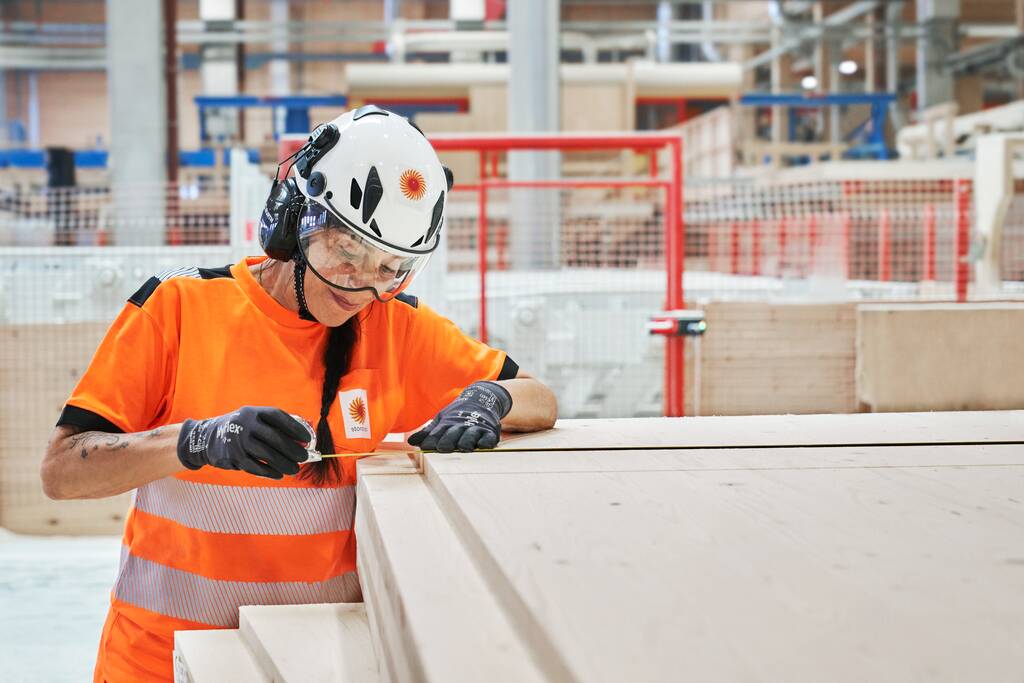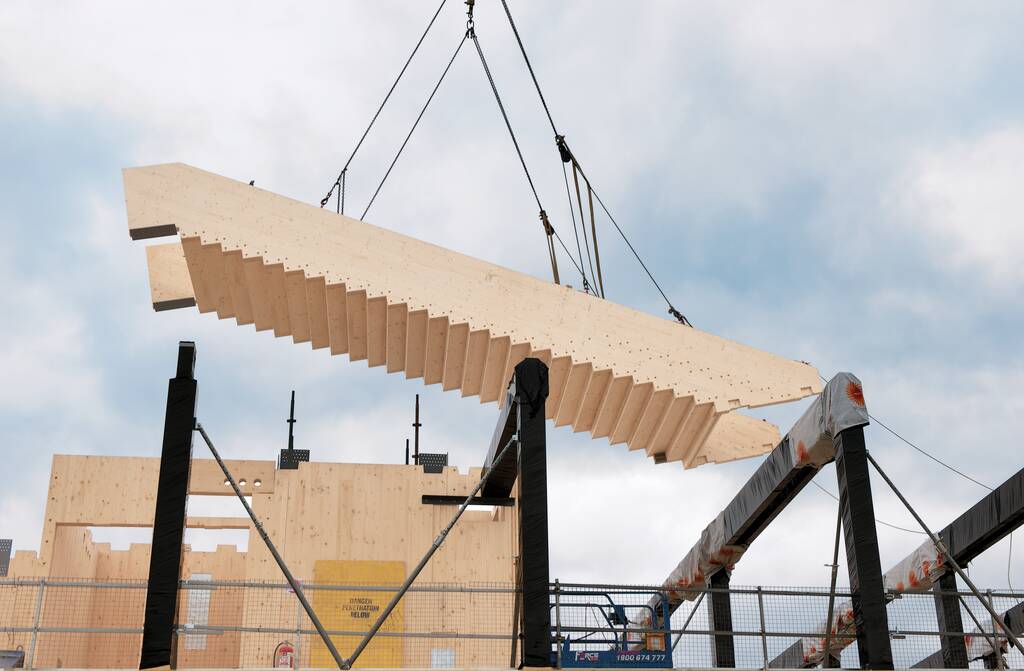Understand the programme implications of timbers installation speed
Because of the high degree of prefabrication, mass timber buildings are quick to erect, typically installed directly from the delivery truck. Components are craned into place and connected using simple steel connectors and hand-held power tools. Without the need for drying and curing, installation of subsequent floors can follow on immediately, and an average sized mass timber frame can be completed in a matter of weeks.
Follow-on trades can also begin their works once a given floor has been completed, and adequately protected from weather ingress, however this requires readiness of the appropriate subcontractor teams for the time savings of this ‘overlap’ in works to be realised.
Working with contractors, projects managers and quantity surveyors who are familiar with working with engineered timber can help ensure these time saving operations are planned for and realised.
Construction of mass timber structures, and subsequent follow-on trades such as first fix, are also much quieter and cleaner than equivalent work on traditional concrete construction sites, with reduced impact on neighbouring homes and businesses. Fewer site personnel are typically required for the erection of the structure itself, and the working conditions for those which are needed are generally safer and healthier.
Managing water on site is essential to protect the integrity, long term performance and aesthetics of timber buildings
Managing water on site is essential to protect the integrity, long term performance and aesthetics of timber buildings
As a hygroscopic material, timber’s sensitivity to moisture and water uptake should be considered and addressed at all stages of construction, including through the design and detailing of the building itself to ensure the buildings resilience during use and occupation.
However, the construction stage in particular represents a significant risk for moisture issues due to the exposed nature of the structure and unpredictability of weather events, and as such it is essential that moisture management is effectively planned and executed.
For moisture management to be efficient and robust at the construction site, it should be planed already at the design phase. Often it is the details in the construction design that are vulnerable and should not be exposed to weather conditions at building site. If moisture management is insufficient it could cause problems both at the construction site and in the service life of a building.
It is therefore important already in the design phase to involve all stakeholders in the moisture management plan in order to achieve successful moisture management during the construction phase. One of the pitfalls often overlooked is how moisture management is operational when responsibility changes from one stakeholder to another.
Even though moisture management is often thought to be relevant only for the construction process, it is also important to implement a moisture management strategy for the building in service.
Measures to combat moisture issues
Many different mitigation measures are available to help avoid moisture issues during construction, however their costs can vary significantly and so it is essential that the options are discussed and the measures to be implemented agreed in advance.
The most robust approach to moisture mitigation is to erect a large scale cover or tent over the entirety of the building prior to the construction commencing, however this incurs significant cost and has knock on impacts to other construction processes such as lifting. Where this sort of measure is not practical, other smaller scale physical interventions can be combined with protocols to help minimise the risk.
Typically, moisture mitigation measures will include the application of end grain sealant to component edges and cuts, and the application of protective membranes to the face of panels within the factory. On site various other measures should be considered, including the use of temporary drains to roofs, covering of openings with protective barriers, and protocols for brushing away standing water after each episode of rain or other moisture source.
Another key aspect of moisture management during construction is monitoring of the timber components condition. This should include visual inspection but also moisture measurements of components before they are covered up or sealed, to prevent locking in moisture. Where high moisture content is measured within components, they must be suitably dried and re-tested before work continues.



